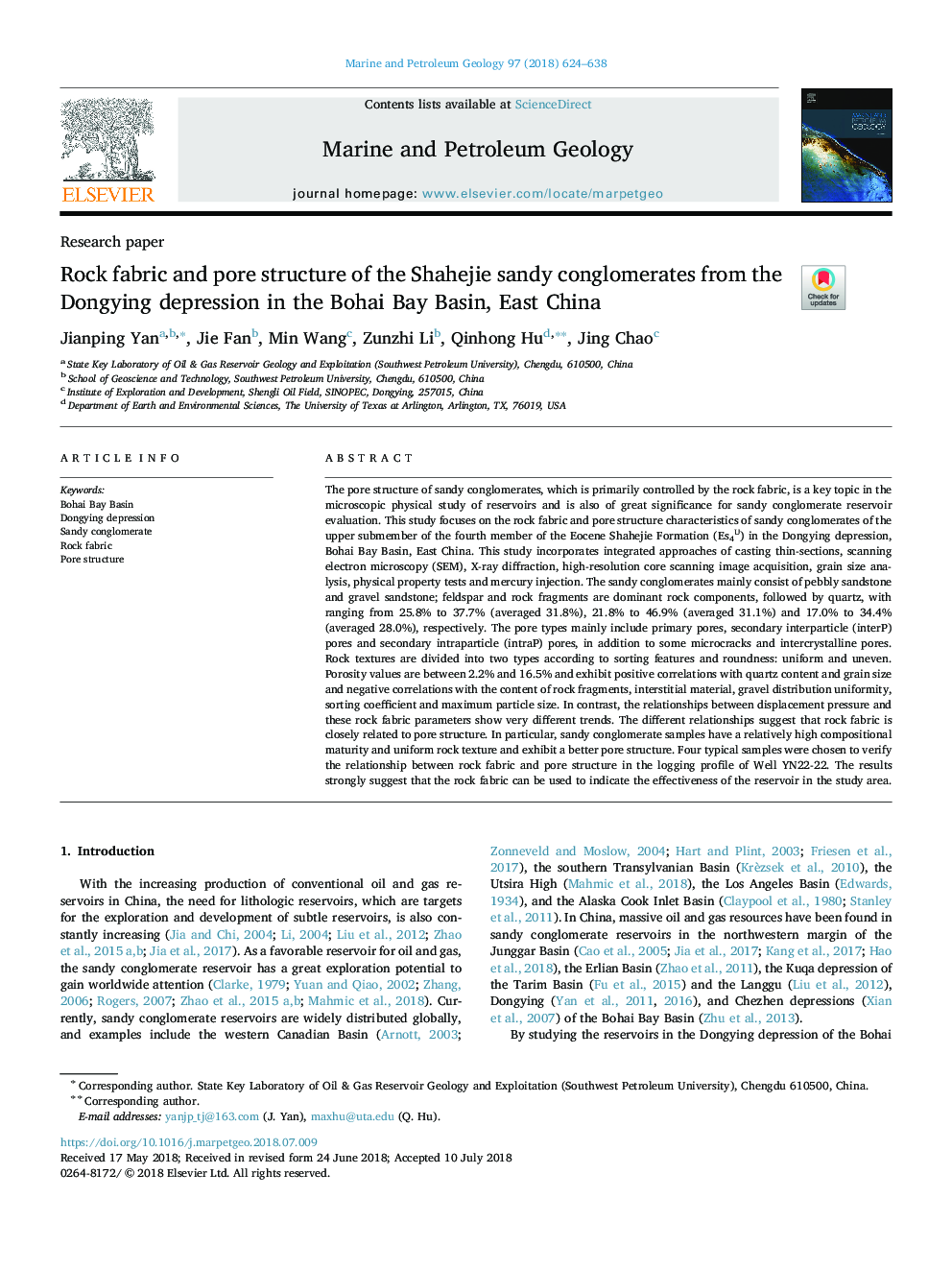| Article ID | Journal | Published Year | Pages | File Type |
|---|---|---|---|---|
| 8909007 | Marine and Petroleum Geology | 2018 | 15 Pages |
Abstract
The pore structure of sandy conglomerates, which is primarily controlled by the rock fabric, is a key topic in the microscopic physical study of reservoirs and is also of great significance for sandy conglomerate reservoir evaluation. This study focuses on the rock fabric and pore structure characteristics of sandy conglomerates of the upper submember of the fourth member of the Eocene Shahejie Formation (Es4U) in the Dongying depression, Bohai Bay Basin, East China. This study incorporates integrated approaches of casting thin-sections, scanning electron microscopy (SEM), X-ray diffraction, high-resolution core scanning image acquisition, grain size analysis, physical property tests and mercury injection. The sandy conglomerates mainly consist of pebbly sandstone and gravel sandstone; feldspar and rock fragments are dominant rock components, followed by quartz, with ranging from 25.8% to 37.7% (averaged 31.8%), 21.8% to 46.9% (averaged 31.1%) and 17.0% to 34.4% (averaged 28.0%), respectively. The pore types mainly include primary pores, secondary interparticle (interP) pores and secondary intraparticle (intraP) pores, in addition to some microcracks and intercrystalline pores. Rock textures are divided into two types according to sorting features and roundness: uniform and uneven. Porosity values are between 2.2% and 16.5% and exhibit positive correlations with quartz content and grain size and negative correlations with the content of rock fragments, interstitial material, gravel distribution uniformity, sorting coefficient and maximum particle size. In contrast, the relationships between displacement pressure and these rock fabric parameters show very different trends. The different relationships suggest that rock fabric is closely related to pore structure. In particular, sandy conglomerate samples have a relatively high compositional maturity and uniform rock texture and exhibit a better pore structure. Four typical samples were chosen to verify the relationship between rock fabric and pore structure in the logging profile of Well YN22-22. The results strongly suggest that the rock fabric can be used to indicate the effectiveness of the reservoir in the study area.
Related Topics
Physical Sciences and Engineering
Earth and Planetary Sciences
Economic Geology
Authors
Jianping Yan, Jie Fan, Min Wang, Zunzhi Li, Qinhong Hu, Jing Chao,
